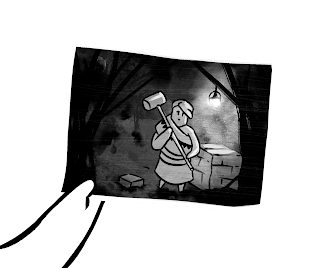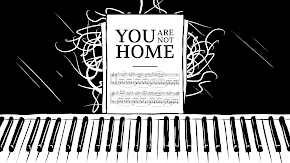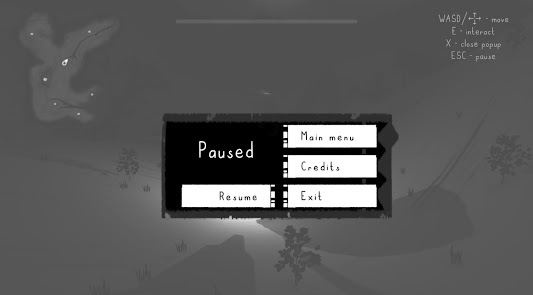With the game submitted, now is the chance to reflect on these past few months, and what I've learnt.
Did I achieve what I set out to do?
Honestly, this one is a resounding yes. I've made a game! An entire game, that is playable, without bugs or placeholders. And I've done it pretty much single-handedly, teaching myself how to use Unity and how to code in C#. Most importantly, I think I've given the game an atmospheric art style that reflects my original vision.
When I laid out my action plan, I anticipated that I might need to scale back my scope - I planned for 5 quests but accepted that some might need to be cut to hit the deadline. I always said, so long as the 'bookends' of opening and closing were there, the game would hold up. But I always felt like the game needed enough quests for the player to really get a feel for the story - and perhaps to understand that each character's arc was based upon a reason for loneliness within our community. Grief, anxiety, or simply being forgotten about. So I am really pleased that I managed to include all the elements of the story that I'd planned for.
What changed from my original plan?
In my original pitch, I'd planned to have 3D cinematic cutscenes, but swiftly changed them to 2D ones after I got feedback from my classmates and tutor that they preferred the 2D style. Luckily for me, it was a lot simpler to create them in 2D anyway!
If I had eight more weeks, what might I add to the game?
Well, nice animations for every character would be a bonus! But honestly, I think the game's main weakness in terms of gameplay was the time spent travelling across the land. This was summarised nicely by one of my playtesters:
"Movement speed was too slow to get from point A to B, but maybe to fast to appreciate scenery optimally. Maybe with more time have a varied speed based on terrain (i.e. crossing rivers) and obstacles to avoid (trees? boulders? etc) to make the experience more tactile."
Another playtester said something similar regarding the land between the characters:
"I think having something to think about between characters would be good though. Many of the characters are scared to travel away, but it was too easy to just walk across the land to them... Some kind of light management, or management where you have to make less noise or find your way in the dark would be good... I think the open land needs to feel like the darkness areas so that the player relates more to the characters fears."
Level design isn't my forte, and neither is environment design. So the terrain was fairly basic, and it meant that exploration was not particularly exciting for the player. Ideally, I would look into adding a gameplay element, or more puzzles/challenges, for the traversal of the world.
I'd also consider more settings, such as brightness/gamma and a save/load screen. And perhaps a quest log that players could refer back to if they felt lost or confused.
What have I learnt?
Most importantly, that planning is
everything. Having a weekly action plan, alongside a trello board, was absolutely crucial for helping me maintain perspective and motivation across a long project. It also prevented me from over-scoping initially. I didn't need to panic about the amount of work left, because I knew I was hitting my targets. I worked out my dependencies which motivated me past my creative blocks - for example, I knew how much of the game depended on the quest and dialogue writing, so I was forced to get that done early. As I worked, I didn't get distracted by every new bug that arose, because I could add them to the trello and address them systematically when I had time.
I have also learnt the importance of playtesting and listening to feedback. It's easy as a game designer to feel like your game is obvious, but the player doesn't know what you know. There were times when I needed to offer them more hints and guidance, and I would never have known that without playtesting.
Finally, I guess I've just learnt to have fun with it. Sure, white-boxing everything first might seem to make sense on paper, but there's nothing as motivating and delightful as seeing the mood of the game come to life. Add in the atmospheric lighting, the bits of post-processing, the little sound effects, the tiny bits of polish that don't take too long but help you really feel inspired by what you're creating. Because if you don't love your game, why would anyone else?




Comments
Post a Comment